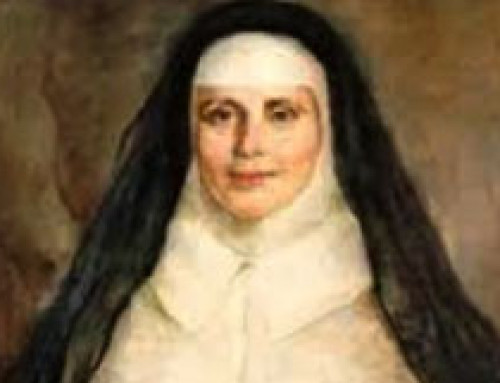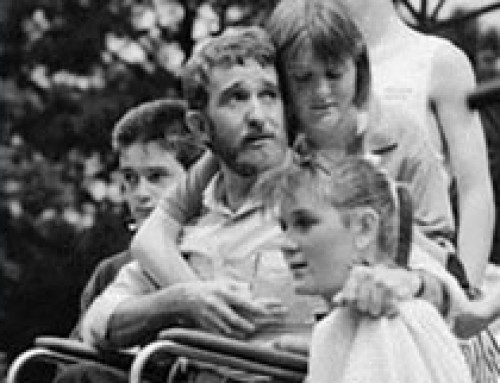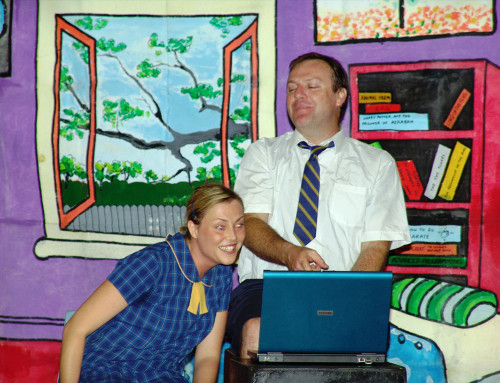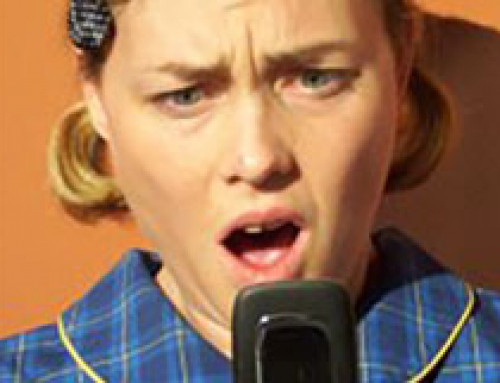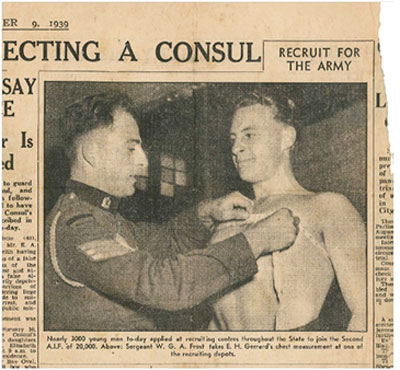

WW2: Fighting For It
The Performance
Fighting For It
or
How Norm, Jean, Muriel and Ron beat back Tojo and saved Australia
‘For each day a worker has off there’s been someone out on the street fighting for it!’
Exclaimed Muriel on many an occasion – so it made sense that she, a lifelong member of the communist party, ‘until bloody Stalin invaded Yugoslavia that is’, would join up to fight fascism. After all her best mate Eileen was working six, ten-hour factory shifts a week in Maribyrnong. Her brother Norm had enlisted and sailed for Singapore and Ron, who had serenaded her at a Trade union meeting with the new hit ‘We’ll Meet Again’, was off in Dubbo training troops. So she joined the WAAAF and ended up in Townsville as a radio telegraphist.
Fighting For It tells the story of WW2 through the eyes of Grandad – Ron. He talks to his grandson Boyo, played by the audience. He talks of his great love Muriel – Nanna, her brother Norm and her mate Eileen. Their stories encompass: the fall of Singapore and the horrors of Changi and the Burma railway, the role women played throughout WW2, the training of troops and the battle of the Pacific, especially Balikpapan, and the Japanese surrender. It also explores the occupation of Hiroshima and the effects of the atomic bombing of Japan.
Nanna who never saw her brother Norm again was unable to forgive the Japanese. Ron however, who spent two years in Hiroshima ‘cleaning up the mess made by the Yanks’, fell in love with the Japanese people and culture. Grandad discovered forgiveness.
The play is performed by a theatre-in-schools professional who brings the script and stories into vivid focus with deep emotion, great humour and the terrific songs of WW2.
Comments
‘Once again the actor was amazing and captivating in his presentations to Yr 9 and 10 this year. I would like you to pass on to him both my thanks for his energy and sensitivity with the presentation. His WW2 presentation had me in tears, as it reminded me so much of my grandparents. Its remarkable how alike our two stories are. He is a real star, and creates a very real and moving opportunity for the students to engage with our past.’
St John Bosco College
‘The World War 2 production was a heartfelt and poignant performance that gave students a deep insight into the ugly truths behind the war. The title, “Fighting For It”, held significant importance to the content of the play, battling for one’s moral beliefs during the war and fighting anguish and sorrow that tempt one to death after the war.
The play covered many themes, particularly emphasising the loss of innocence and loved ones that left many in utter despair and indescribable heartache. The idea of “ambiguous loss” was introduced, which described the loss of loved ones to the war, but never knowing or truly believing that they were gone, so many held on to the tiny flicker of hope. There were also elements of forgiveness and letting go after the war to allow victims of war to move into a new and brighter side of life. Among the men, there was an eagerness to “do my bit” during the war, which provided a powerful sense of unity and loyalty to their nation. After men signed up for war, vacancies for many jobs were left behind, and women took up those jobs and ran the city. The play highlighted roles of women during war, which was a significant part of war often overlooked and disregarded.
One of the realisations that struck me hard from the play was that there are no winners in wars. All the casualties and losses overwhelmed any territories or power that may be gained. Many countries held an unadulterated hatred against the Japanese and saw them as one of the most powerful and malicious countries. In fact, however, many innocent Japanese were victims who suffered greatly for their leader’s selfish desire and inconsiderate nature. The construction of the play was based on primary sources, which was enlightening to students and gave them a truthful insight into the excruciating pain of war.
The play had a strong sense of realism and sent out the message that not all stories end with a “happily ever after”. There were also several features of ironic humour in the harshest of times that made the play entirely entertaining to the audience. To sum up, the WW2 performance was an unforgettable and notable experience that many could connect with and relate to. It sent out a message that one would never forget: “In war, whichever side may call itself victor, there are no winners. But all are losers.” — Neville Chamberlain.’
Student Year 10 St Aloysius College
Details
| SUITABILITY | Years 7 – 12 |
| DURATION | 55 minutes + 15 minute Q&A |
| COST PER STUDENT | $7.70 ($7.00 + 70c GST) |
| MIN PER SESSION | $770.00 ($700 + $70 GST ) if 100 students or less |
| NOTES | Teacher Notes provided |

